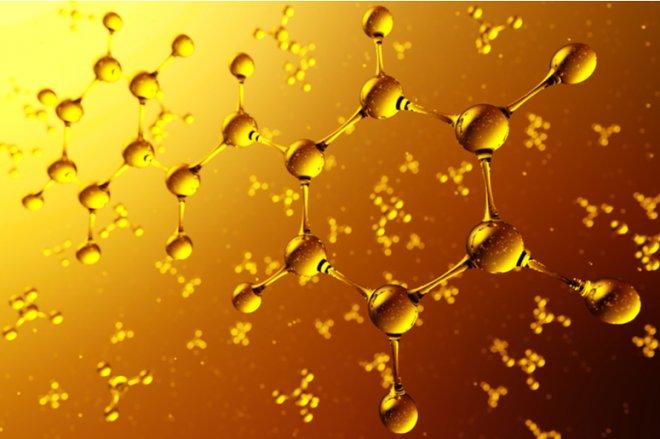
Benzene in 126 dimensions
Australian scientists recently described a chemical molecule that has long attracted their attention. It is believed that the result of the study will influence new designs of solar cells, organic light emitting diodes and other next generation technologies that show the use of benzene.
benzene organic chemical compound from the group of arenes. It is the simplest carbocyclic neutral aromatic hydrocarbon. It is, among other things, a component of DNA, proteins, wood and oil. Chemists have been interested in the problem of the structure of benzene since the isolation of the compound. In 1865, the German chemist Friedrich August Kekule hypothesized that benzene is a six-membered cyclohexatriene in which single and double bonds alternate between carbon atoms.
Since the 30s, discussions have been going on in chemical circles about the structure of the benzene molecule. This debate has taken on added urgency in recent years because benzene, made up of six carbon atoms bonded to six hydrogen atoms, is the smallest known molecule that can be used in the production of optoelectronics, a technology area of the future. .
The controversy surrounding the structure of a molecule arises because, although it has few atomic components, it exists in a state that is mathematically described not by three or even four dimensions (including time), as we know from our experience, but up to 126 sizes.
Where did this number come from? Therefore, each of the 42 electrons that make up the molecule is described in three dimensions, and multiplying them by the number of particles gives exactly 126. So these are not real, but mathematical measurements. Measurement of this complex and very small system has so far proved impossible, which meant that the exact behavior of the electrons in benzene could not be known. And this was a problem, because without this information it would not be possible to fully describe the stability of the molecule in technical applications.
Now, however, scientists led by Timothy Schmidt of the ARC Center of Excellence in Exciton Science and the University of New South Wales in Sydney have managed to unravel the mystery. Together with colleagues at UNSW and CSIRO Data61, he applied a sophisticated algorithm-based method called Voronoi Metropolis Dynamic Sampling (DVMS) to benzene molecules to map their wavelength functions over all 126 sizes. This algorithm allows you to divide the dimensional space into "tiles", each of which corresponds to permutations of the positions of the electrons. The results of this study were published in the journal Nature Communications.
Of particular interest to scientists was the understanding of the spin of electrons. “What we found was very surprising,” Professor Schmidt notes in the publication. “The spin-up electrons in carbon are double-bonded into lower-energy three-dimensional configurations. Essentially, this lowers the energy of the molecule, making it more stable due to the electrons being pushed away and repelled." The stability of a molecule, in turn, is a desirable characteristic in technical applications.
See also:
